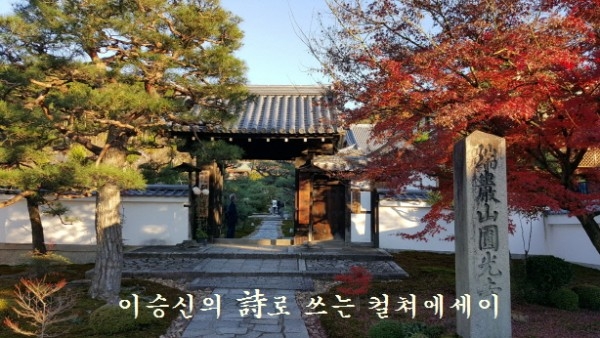
Enkouji of Tokugawa Ieyasu I sometimes wonder why a small city like Kyoto has so many must-see places. Among them, Enkouji is one place that is particularly worth visiting. If you are interested in history of Japan, you would surely have heard of Tokugawa Ieyasu (1543-1616), the hero who unified Japan and created Tokugawa shogunate. Enkouij is the place where he trained in Kyoto and taught the youth while young. Just hearing this is enough to peak one’s interest. There is a noodle shop in Higasiyama that I frequently go to. One day I was waiting at the entrance in a line and a picture on both sides of a big magazine with amazing autumn colors entered my field of vision. It is Enkouji. Even taking into consideration the modern photography technique and the gaudiness of modern advertisements, it still looked attractive, and I decided to visit there. I got off the streetcar at Ichijoji. Ichijoji is a historical area with Shisendo, a famous garden designed and made by a famous poet, and a temple where Matsuo Basho, the master of Haiku once stayed was nearby. Pine trees lining the entrance to Enkouji with 1,300 years of history exemplify the grace of the place. I walked and went up and a modern Zen garden was spread out before my eyes. The Zen garden usually symbolizes the Universe with an old rock on sand. but there tall rocks standing slim like modern installation art have a fresh look. I enter a Deva gate to find the very garden that I saw in the magazine. A densely leaved maple tree which is said to be older than 400 years, has a big glossy trunk and each tree is setting leaves of harmonious colors on its head like medals. I climbed the pilgrimage route past a pond reflecting the bamboo forest. On a spot from which downtown of Kyoro can be seen is a petite grave. It’s the grave of Tokugawa Ieyasu. Pretty trees are surrounding it, yet it is so humble for a real famous Shogun. When I come there with people from Seoul, they would always comment that it was too humble for him, it does not fit the image at all of the Shogun Ieyasu Tokugawa of Japan. In Japan, Tokugawa Ieyasu is a very well known figure who creates a major sensation as a hero of epic dramas, movies, plays and books. I have also often heard of Korean people who have read the bestseller Ieyasu Tokugawa in Korea. In the novel, there are famous quotes referring to '3 warlords of Japan' If a bird doesn’t sing, kill it (鳴かぬなら殺してしまへ時鳥) - Oda Nobunaga If a bird doesn’t sing, make it (鳴かずともなかして見せふ杜鵑) - Toyotomi Hideyoshi If a bird doesn’t sing, wait for it (鳴かぬなら鳴まで待よ郭公) - Tokugawa Ieyasu The Japanese praise Tokugawa Ieyasu’s character of waiting in patience. His testament is also impressive. 'Life is like walking along a long road shouldering a heavy load, there is no need to hurry. One who treats difficulties as the normal state of affairs will never be disconten. Patience is the source of eternal peace, treat anger as an enemy. Harm will befall one who knows only success and has never experienced failure. Blame yourself rather than others. It is better not to reach than to go too far.' The original document of Testament of Ieyasu is in the archives of the Toshogu shrine at Nikkō. They held a funeral ceremony at Edo following his wishes and at the first anniversary of his death, moved the body to Nikko which was two hours away. There is a program which deftly combines history and medicine at NHK, listing diseases that the old heroes of Japan had. Recently I learned from this program that Tokugawa Ieyasu died of stomach cancer and syphilis at the age of 73. Tokugawa was born in Okazaki Castle. He lost his parents when he was young and went through several near death experiences, yet overcame hardship and became a hero of the country. Novels and epic dramas featuring his life abound. He is called the 'genius of patience' and highly respected by the Japanese. The real grave with his body is, if you think about it, at Nikkō. Yet it is true that there is a grave with his name in Enkouji where he spent his youth. I understand why people think that it’s humble for a grave of a hero, I guess it is because Japan, under the influence of Buddhism (which we Koreans introduced to them), values frugality, moderation and humbleness, so naturally their graves are like that. I went to Enkouji because I was charmed by pictorials in a magazine, yet standing there, I came to think about the relationship of Enkouji and Tokugawa Ieyasu, the hero from 400 years ago and history of Japan. Didn’t it see the history, that 400 year old handsome glossy tree 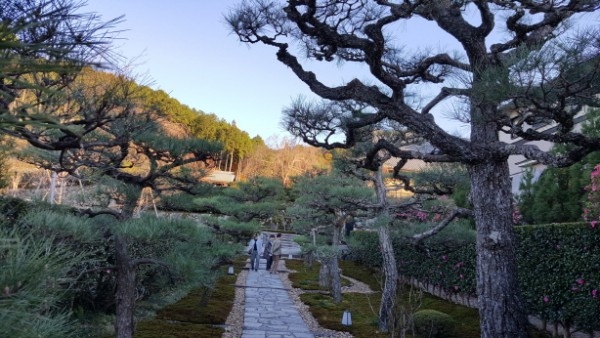
Entrance to Enkouji where you can feel the grace of lining pine trees 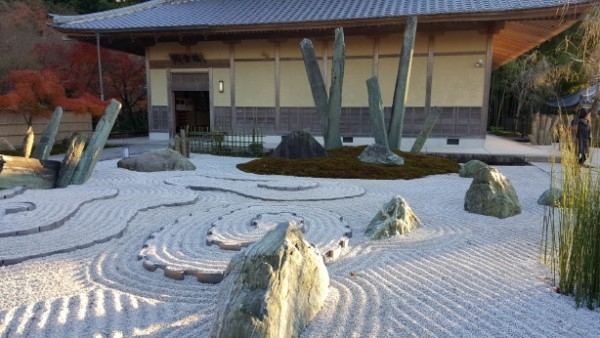
Looks like the most modern of zen gardens, Enkouji, December 2015
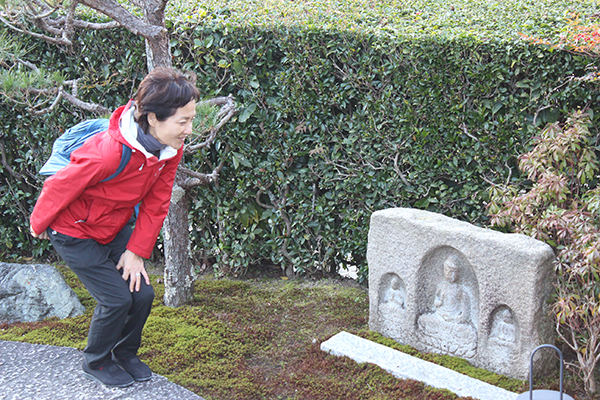
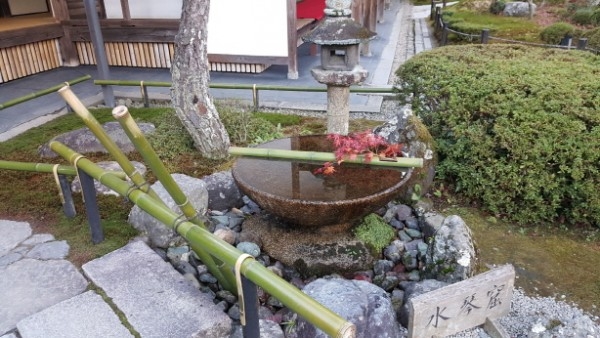
You can hear the clear tinkle of a bell as water drops if you hold your ear to the edge of bamboo cylinder

Sound as water drops and laps
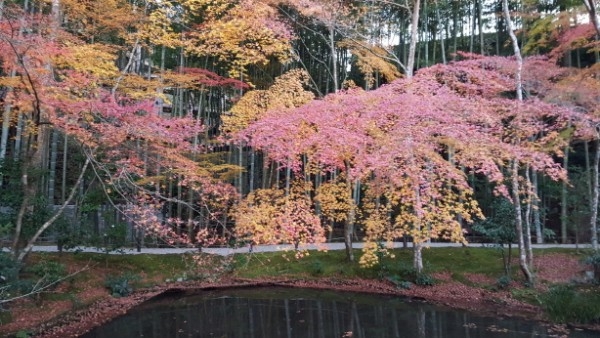
A pond reflecting bamboo forest behind dazzling autumn leaves, Enkouji, December 2017
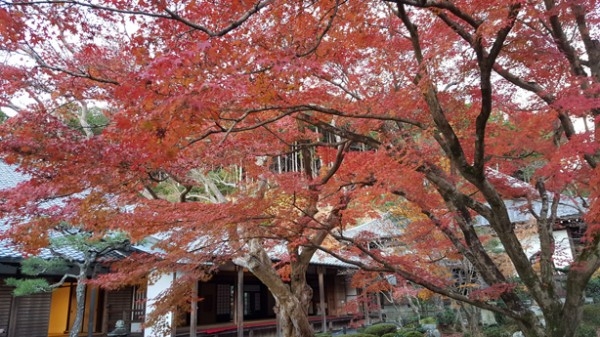
Old Maple tree
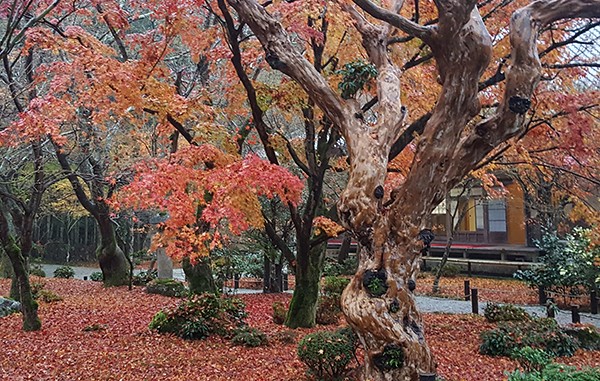
The 400-year-old maple tree wearing maple leaves like medals, Enkouji, December 2015
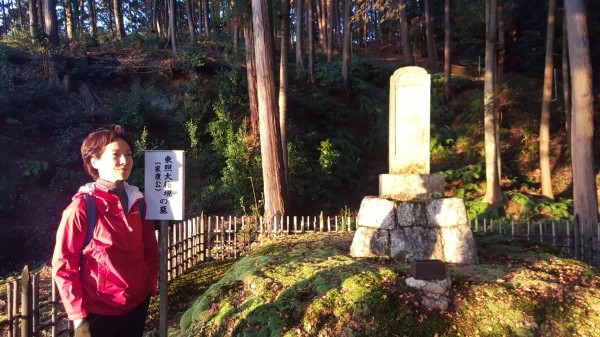
A humble grave of the shogun Tokugawa Ieyasu on hill, Enkouji, December 4, 2016
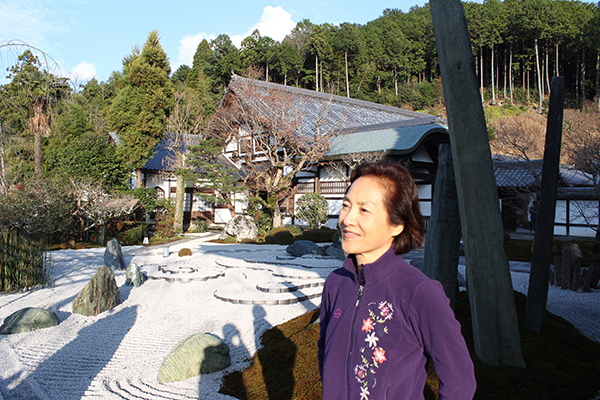
Modern zen garden, Enkouji, Kyoto, December 2018
| 



